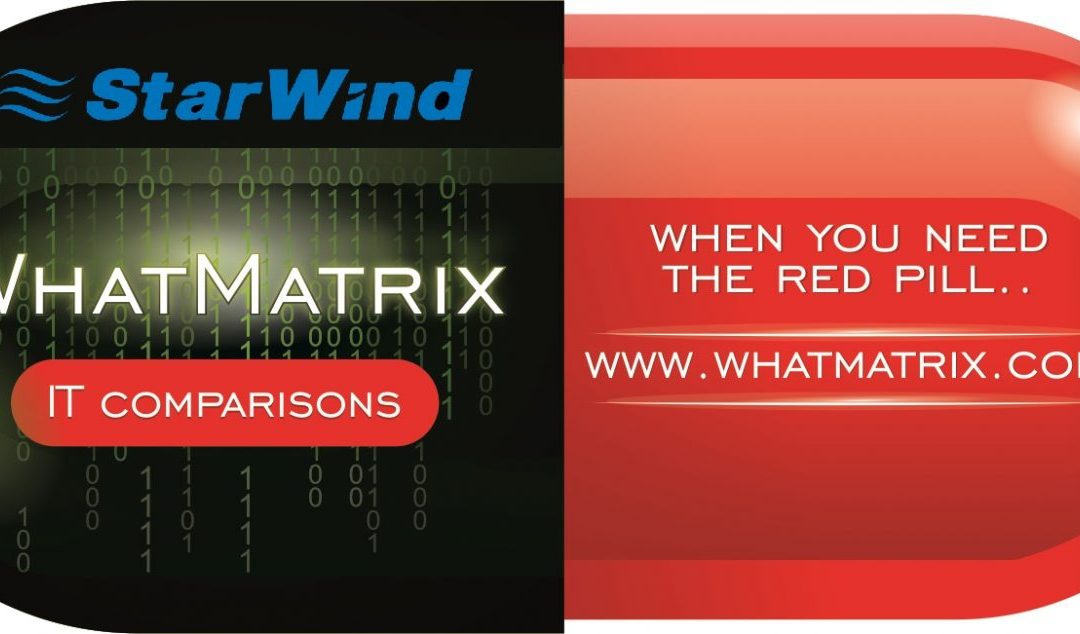Meet the Vendor: StarWind
StarWind has a long track record in the storage industry. It started in 2008 as a spin-off from Rocket Division Software, Ltd. (founded in 2003). Initially StarWind provided free Software Defined Storage (SDS) offerings to early adopters in 2009. In 2011 the company released its product Native SAN, that was later re-branded to Virtual SAN. Since then both the company and the product portfolio have evolved. At present StarWind has office locations in the USA, UK, Spain, Estonia and the Ukraine, with its headquarters based in Middleton, Massachusetts, USA. The company has more than 200 employees and serves more than 4,500 customers around the globe. In 2016 StarWind was named as one of Gartner’s “Cool Vendors for Compute Platforms”.
StarWind’s HCI – how does it compare?
StarWind did not enter the HCI space until 2015. StarWind HyperConverged Appliance (HCA) was released to market with the aim to bring hyper-convergence from the Enterprise level to SMB and ROBO deployments. To do so, the appliance brought two main differentiators to bear: simplicity and cost-efficiency. Now, four years later, the StarWind HCA install base consists of approximately 1,250 customers worldwide.
So how does the platform compare to other SDS/HCI storage offerings? What first stands out is that from a storage support perspective StarWind HCA is pretty versatile. It offers all flavors of storage configurations: Magnetic-only, Hybrid (Flash+Magnetic) and All-Flash. All available disk slots in a StarWind HCA node can be utilized. In addition the StarWind HCA technical architecture allows scaling using external disk shelves (JBODs).

Because StarWind has its roots in Microsoft technology, it’s no surprise that StarWind HCA can be leveraged in VMware, Hyper-V and Windows Bare Metal environments. The HCI platform connects storage resources to hosts through the iSCSI protocol. And although the solution was originally meant to cater to SMB and ROBO, it does come with some enterprise features such as stretched clustering.
Currently there are what some would consider base capabilities missing though. Due to some recent changes in its internal architecture StarWind HCA has (temporarily) lost some of its native protection features, most notably storage snapshots and remote replication. This is negated in part by the fact that the available snapshot and replication features present in the hypervisor platforms can be leveraged instead. It would be nice though if the platform regained such capabilities. As of yet, there are also no Quality of Service (QoS) capabilities present to either limit or guarantee performance to certain workloads.
All things considered StarWind HCA is a an interesting HCI offering with a solid base, but at the same time still has a lot of untapped potential. If you’d like to deep dive into what StarWind HCA brings to the table exactly, please visit our current SDS/HCI comparison as StarWind HCA can be found there as of today!
A big thank you goes out to the StarWind team for hanging in there during our rigorous evaluation of their HCI platform.
Herman Rutten – Category Owner SDS & HCI

Herman Rutten

Latest posts by Herman Rutten (see all)
- StarWind HyperConverged Appliance enters the WhatMatrix - December 3, 2019
- SDS & HCI Updates: Nutanix, NetApp, vSAN, HPE - September 3, 2019
- WhatMatrix adds Scale Computing HC3 to SDS/HCI Lineup - June 5, 2019





